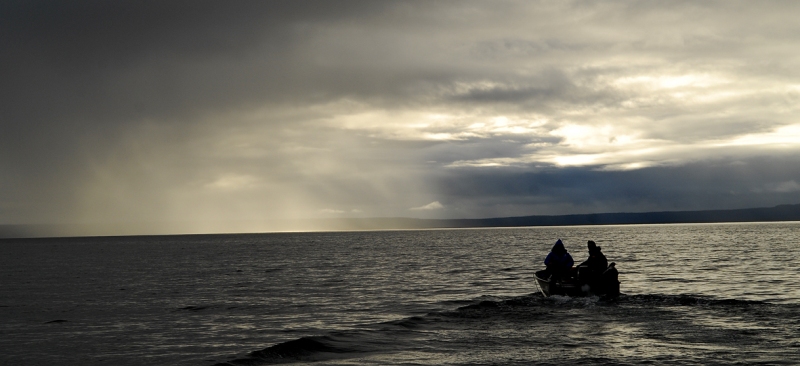 |
 |
Lord of the Abyss: lake charr (Salvelinus namaycush) cruising the shallows on Great Bear Lake Behavioural and population ecology of juvenile salmonids My research is primarily aimed at understanding 1) how abiotic environmental variables and the social environment influence the agonistic behaviour of individuals and 2) what are the population consequences of these decisions. More specifically, I investigate how factors like habitat heterogeneity, food abundance and intraspecific competitor density influence the agonistic behaviour and space use of territorial species and how changes in individual agonistic behaviour determine patterns and mechanisms of density-dependent population regulation, movement, habitat use and spatial distribution. Studying these problems provides an exciting opportunity to make stronger links between the individual and population levels of organization and to formulate better resource management and conservation strategies of wild populations. I utilize juvenile stream-dwelling salmonids as a model system because they possess a suite of distinct advantages for my research objective.
|
 |
Summer storm is coming on Great Bear Lake. Sea lamprey and alarm cues: application of species specific antipredator warning signals to manipulate sea lamprey behaviour Sea lamprey, an exotic pest, invaded most of Great Lakes in the early 20th century and caused enormous declines in a variety of economically and ecologically important host fish species, especially lake trout, Salvelinus namaycush. The integrated management of this invasive pest is presently achieved by the use of lampricides in tributary streams, use of low-head barrier dams to prevent adult lamprey from accessing spawning grounds, trapping of adults and controlled sterile male release. Due to rising lampricide costs and mounting public disapproval for pesticides, the Great Lakes Fishery Commission pledged to reduce its reliance on lampricides by 50%. My co-investigators and myself are working on developing a new method that involves the use of chemical repellents to manipulate sea lamprey behaviour and ultimately to contribute to sea lamprey management. Several fish species rely on damage-released chemical alarm cues to assess local predation threats. These alarm chemicals are generally found within the skin and are released through mechanical damage effected by a predator. When detected by conspecifics and some heterospecifics, these cues can elicit both dramatic, short-term increases in species specific antipredator behaviours (e.g. fright response, freezing, decreased feeding etc) as well as long-term responses such as morphological or life-history changes. While a large amount of research effort has been directed at other alternative control methods, such as TFM, sterile male release, trapping or pheromones, the use of repellents for sea lamprey control purposes has remained, curiously, unexplored. Repellents could be a new and cost-effective way to manipulate adult sea lamprey behaviour, prevent their access to target streams, or, when used in conjunction with other control methods, to force migrating sea lampreys toward areas where traps are placed. |
 |
Cold but smooth, like beer: morning run to our sampling grounds on Great Bear. |
 |
I am fishing for arctic grayling (Thymallus arcticus) on Great Bear at 10 p.m. |